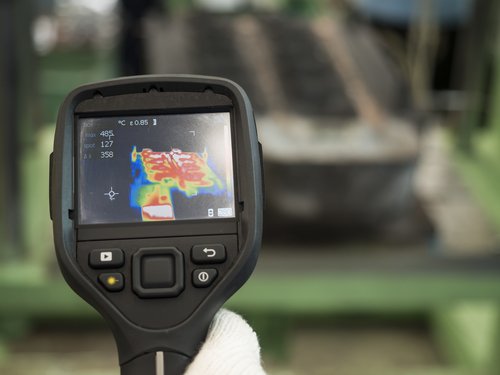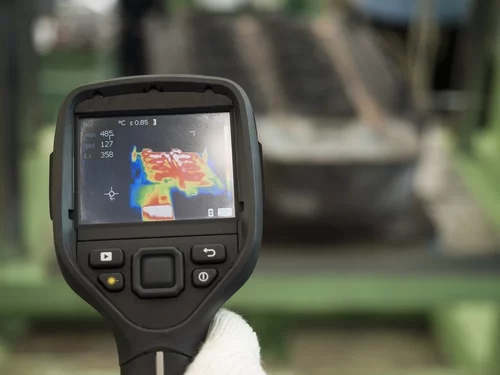As a professional mold inspector, I can tell you firsthand — not a day goes by where I’m not asked one of these:
- What is a mold inspection?
- What does a mold inspector actually do?
- How much does a mold inspection cost?
Here’s the good news:
After reading this guide, you’ll have a clear understanding of how mold inspections work, when you need one, and what you’re really paying for.
Let’s dive in.
- Unbiased (no remediation)
- Same/Next-Day Reports
- Homes & Commercial
What Does a Mold Inspection Include?
A mold inspection focuses on determining if there is water damage in the home causing a mold issue. Since most homes contain some mold, the real question is whether it’s normal background mold or due to a moisture problem that requires remediation.
According to the EPA, controlling moisture is the key to preventing mold.
- Unbiased (no remediation)
- Same/Next-Day Reports
- Homes & Commercial
How Is a Mold Inspection Done?
A professional mold inspection typically includes:
- Visual inspection for mold growth
- Moisture mapping and leak detection
- Air and/or surface sampling
- HVAC system check for contamination
- Sampling plan based on observed conditions
Each inspection is customized based on the home and concerns.
- Unbiased (no remediation)
- Same/Next-Day Reports
- Homes & Commercial
How Much Does a Mold Inspection Cost?
The cost varies depending on home size, sample count, and inspection scope. On average, you’ll pay around $500 for a 2000–2500 sq ft home.
Pricing models:
- Per sample: $75–$125 each (visual inspection often free)
- Flat fee: One price includes all sampling and reporting
- By square footage: ~$150 per 700 sq ft
👉 See full breakdown of mold inspection costs
- Unbiased (no remediation)
- Same/Next-Day Reports
- Homes & Commercial
How Long Does It Take?
A typical inspection takes 1.5 to 2 hours depending on home size. Samples are then sent to a certified lab with results in 24–48 hours.
- Unbiased (no remediation)
- Same/Next-Day Reports
- Homes & Commercial
When Should You Get a Mold Inspection?
Here are some common situations:
- You see visible mold or have a known leak
- You smell a musty odor with no visible source
- You’re buying a new home (especially older or flipped homes)
- You or someone in the home has allergy-like symptoms
- You want documentation for an insurance claim
- You’ve had HVAC or duct issues
Mold inspections can protect your investment and your health. Learn more about pre-purchase mold inspections
- Unbiased (no remediation)
- Same/Next-Day Reports
- Homes & Commercial
What’s the Difference Between a Mold Inspection and a Mold Test?
- Mold inspection is the full process — visual, sampling, and reporting
- Mold testing refers to collecting and analyzing air or surface samples
The two are often used interchangeably, but testing is only one part of a complete inspection.
- Unbiased (no remediation)
- Same/Next-Day Reports
- Homes & Commercial
What Does a Mold Inspector Actually Do?
Here’s a quick overview:
1. Exterior Inspection
Looking for ways water might be getting in — roof leaks, window gaps, poor grading, or plumbing issues.
2. Interior Moisture Mapping
Using tools like:
- Moisture meters
- Thermal cameras
- Hygrometers
To check around windows, bathrooms, kitchens, and HVAC for water intrusion.
3. Air & Surface Sampling
Samples are collected in affected and comparison areas. An outdoor air sample is also taken to set a baseline.
4. Attic & HVAC Inspection
Inspectors check for roof leaks, condensation, or hidden mold near coils and return ducts.
Did you know? Mold in HVAC systems is a common but hidden cause of poor indoor air quality. Read more
5. Reporting & Lab Results
You’ll receive a detailed report explaining:
- What was found
- Lab results from certified testing
- Whether remediation is needed
- Unbiased (no remediation)
- Same/Next-Day Reports
- Homes & Commercial
Should You Test Air Quality for Mold?
Air sampling is one of the most common ways to assess exposure. However, it's only a 5–10 minute snapshot of airborne mold levels — and results can fluctuate.
That’s why air sampling is best used with visual and moisture-based evidence, not by itself.
The American Industrial Hygiene Association (AIHA) cautions against relying solely on wall cavity sampling for mold conclusions.
- Unbiased (no remediation)
- Same/Next-Day Reports
- Homes & Commercial
Best Mold Testing Kits?
Most over-the-counter kits can detect mold, but won’t tell you how much or whether it’s harmful.
My personal recommendation:
My Mold Detective — a professional-grade DIY kit that gives detailed lab analysis.
- Unbiased (no remediation)
- Same/Next-Day Reports
- Homes & Commercial
Do You Need Mold Testing?
Testing is most helpful when:
- You see mold and want to identify the type
- You need proof for a landlord or insurance company
- You’re sensitive to mold and need to check specific species
If you have a leak or see mold, testing isn’t required to confirm the problem — remediation is the priority.
- Unbiased (no remediation)
- Same/Next-Day Reports
- Homes & Commercial
Red Flags: When Remediators Test Their Own Work
If a mold remediation company wants to test before and after their own job, be cautious. That’s like being your own referee.
Ideally, an independent mold assessor should inspect, test, and confirm the issue.
- Unbiased (no remediation)
- Same/Next-Day Reports
- Homes & Commercial
Final Thoughts: Is a Mold Inspection Worth It?
Absolutely — if you:
- Suspect hidden water damage
- Want peace of mind before a home purchase
- Need documentation for allergies or health concerns
Even if you don’t “see” mold, it can still be airborne or hidden behind walls.
A mold inspection by a qualified assessor can save you money, protect your health, and help you make confident decisions.


Explore Mold Remediation Cities
Expert insight by: Brad Fishbein, Licensed Mold Assessor
Updated April 8, 2025

